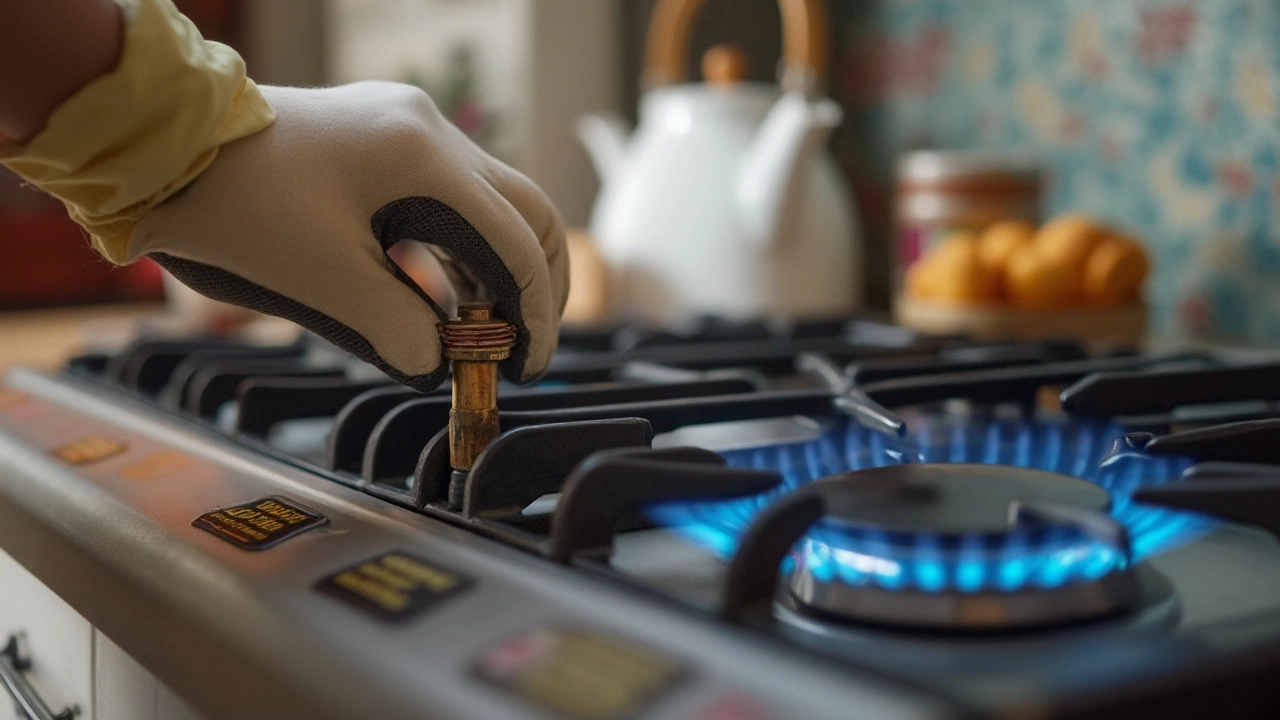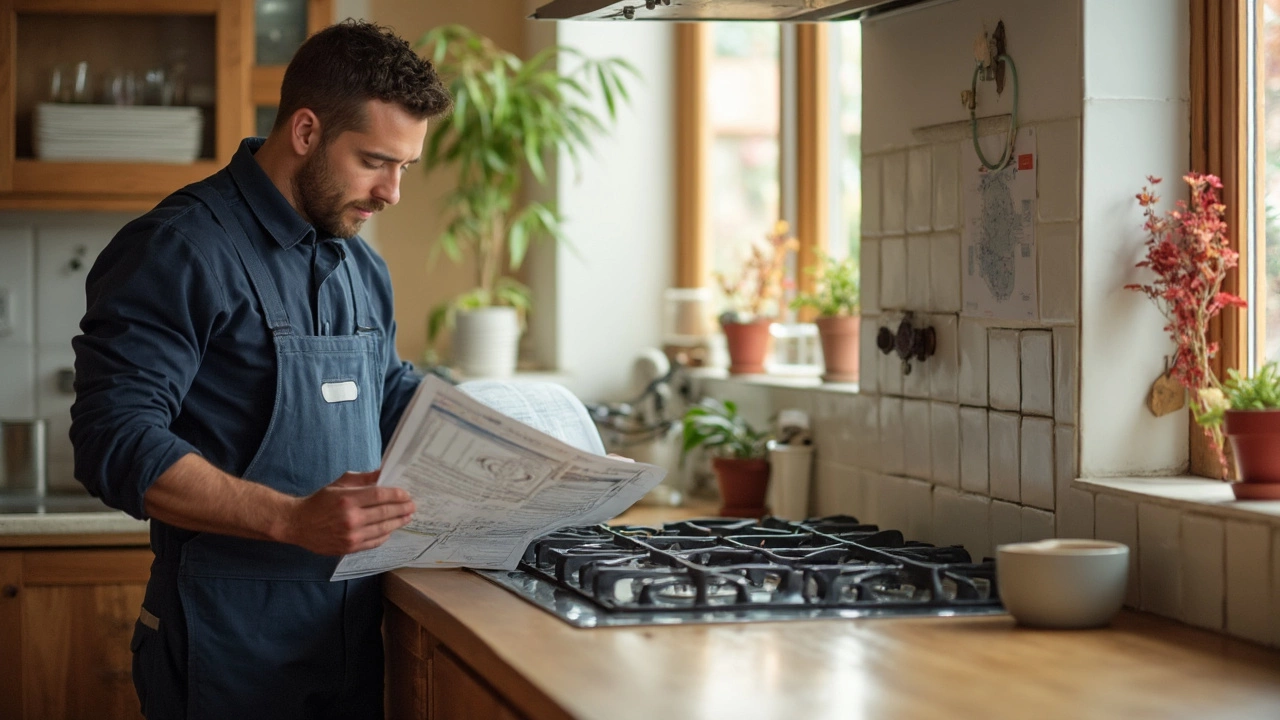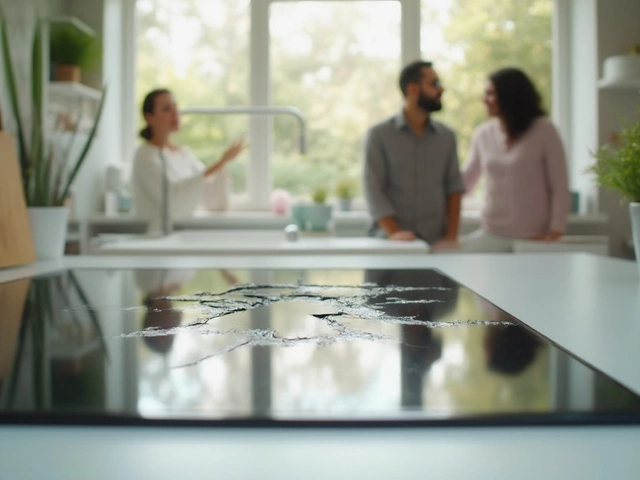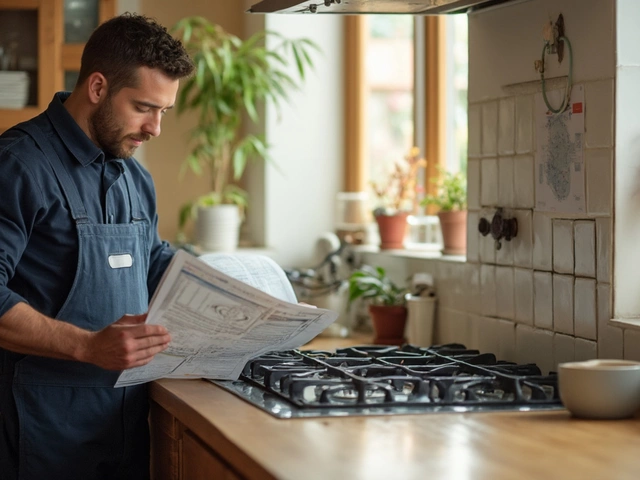So, your gas hob’s given up the ghost or you just want a fresh look in your kitchen. You’re probably wondering if you can yank it out yourself, maybe save a few quid. Here’s the kicker: UK law is clear—replacing a gas hob is not a do-it-yourself job. Only a registered Gas Safe engineer is allowed to hook up or disconnect gas hobs.
Maybe you’ve seen videos online, or your mate down the road reckons it’s an easy swap if you 'just turn off the gas.' Please, don’t. Mistakes can be fatal. A gas leak doesn’t just smell bad—it puts your family at risk for fire, carbon monoxide poisoning, or explosions. In 2023 alone, fire services attended over 2,000 callouts linked to domestic gas faults.
- Legal Requirements for Gas Hob Replacement
- Why DIY Is Riskier Than You Think
- What a Gas Engineer Actually Does
- Hidden Dangers and Safety Tips
- Finding the Right Pro Without Headaches
Legal Requirements for Gas Hob Replacement
If you’re swapping out your gas hob, there’s no wriggle room—the law is tight on this. In the UK, it’s illegal for anyone who isn’t Gas Safe registered to fit, remove, or service a gas hob. This isn’t just a bit of paperwork or a scare tactic. It’s because messing with gas isn’t like changing a lightbulb. There’s a real risk, and that’s why the government has set up strict rules.
The main rule comes from the Gas Safety (Installation and Use) Regulations 1998. This set of rules makes it clear that only engineers listed on the Gas Safe Register are allowed to deal with gas appliances in your home. This includes disconnecting your old hob and hooking up the shiny new one, even if you’re confident you could handle a spanner.
Let’s be clear: if you get caught DIY-ing your hob, your home insurance probably won’t pay out if there’s an accident. Landlords face even tougher penalties—they’re legally required to get annual gas safety checks by a registered pro, and if something goes wrong, there could be fines or even jail time.
Here’s a quick look at what’s legally expected when it comes to replacing a gas hob:
- Your installer must be Gas Safe registered (No exceptions—phone or check online if you’re unsure.)
- They need to follow BS 6172:2010—the British Standard for fitting gas hobs in domestic kitchens.
- Once installed, you should get a certificate, either a Gas Safety Record or a commissioning sheet depending on your setup.
The penalties for breaking these rules aren’t just small fines. Here’s a snapshot from last year’s data:
| Offence | Average Fine (£) | Potential Jail Time |
|---|---|---|
| Unregistered gas work | 6,500 | Yes, up to 6 months |
| No valid gas certificate (landlord) | 1,200 | Possible |
| DIY gas work causing danger | Unlimited | Up to 2 years |
If you want a gas hob replacement that keeps your family safe and your wallet protected, hiring a gas engineer is non-negotiable. Always check their Gas Safe ID card—real pros won’t get offended if you ask.
Why DIY Is Riskier Than You Think
Replacing a gas hob seems straightforward—until you actually try it. Most people don’t realize how easy it is to get things wrong and the risks that come with even a small mistake. Gas isn’t forgiving. If you mess up the connection or damage a pipe, you might cause a leak or worse.
Here’s the thing: in the UK, the law says only a Gas Safe registered engineer can legally install (or even disconnect) a gas hob. That’s not just a money-maker for the pros. It’s because the risks are real. Gas is invisible, leaks can go unnoticed, and the outcome can be deadly.
Think about this: carbon monoxide is called the "silent killer" for a reason. You can’t see or smell it, yet just a small leak can build up on you and your family. The NHS records hundreds of carbon monoxide poisoning cases each year—many traced back to dodgy home gas work.
Check out these numbers from 2023:
| Incident Type | Number of Cases (2023, UK) |
|---|---|
| Domestic Gas Leaks | 2,100+ |
| Explosions Caused by Gas | 19 |
| CO Poisoning Hospitalizations | 241 |
Tampering with your gas connections without a license could also void your home insurance. If there’s damage from a fire or explosion, insurers usually won’t pay if unregistered work was done.
On top of that, selling or renting your home with unlicensed gas work can get you in legal hot water. The penalties are real—up to a £6,000 fine or even jail time for serious breaches under the Gas Safety (Installation and Use) Regulations.
Long story short: the savings from skipping a pro aren’t worth the health and financial risks. It’s always safer (and cheaper in the long run) to get it done properly.

What a Gas Engineer Actually Does
Ever wonder what’s really involved when a gas engineer comes round to replace a gas hob? It’s a world away from just popping out a few screws and turning a spanner. First off, these folks are trained to spot trouble before it causes harm. They're on the Gas Safe Register, which isn’t just some fancy ID—it's legal proof they know their stuff when it comes to anything gas-related.
They start by shutting down the gas supply safely. Gas engineers use specific meters and sensors to double-check there’s no leak, even before the hob comes off. If your gas system or pipework has seen better days, they’ll see it right away. They also check the existing ventilation in your kitchen, making sure it meets today’s standards. Poor airflow can lead to carbon monoxide build-up, which you really don’t want.
Here’s a quick snapshot of what they actually do during a hob replacement:
- Turn off the mains gas supply and check surrounding pipes for leaks.
- Remove the old hob without damaging the gas pipe or any fittings.
- Install and correctly connect the new hob, using approved connectors and materials.
- Pressure test the entire system for leaks after fitting
- Check all burners and ignition points are working correctly.
- Inspect ventilation and advise on improvements if needed.
- Fill out legal paperwork and log the appliance with authorities where required.
For a bit of perspective, here’s a table showing what a certified gas engineer does compared to a typical DIY approach:
| Task | Gas Engineer | DIY Attempt |
|---|---|---|
| Turn off gas and check for leaks | Professional-grade leak detection tools | Maybe just a sniff test (unsafe!) |
| Install appliance | Approved connectors and certified materials | Generic shop-bought fittings |
| Test system after install | Pressure gauge and gas detector | Rarely tested, potential for undetected leaks |
| Paperwork/legal sign-off | Complete and legally valid | None (illegal install) |
Don’t forget, insurance is another reason to get the right pro. If something goes wrong after a dodgy install, your home insurance might refuse to pay out. Gas Safe engineers carry their own insurance for their work too, so you’re doubly covered.
Hidden Dangers and Safety Tips
This isn’t just a swap and screw job. Mishandling any part of a gas hob installation puts you right at the sharp end of real risks: gas leaks, fire, poisoning, and even structural damage if things go wrong. Here’s what trips people up:
- Assuming all connections are the same—different hobs and houses can have slightly different gas fittings. Forcing a connection or using the wrong part spells disaster.
- Missing or damaging the flexible hose. Over-tightening or bending the pipe creates weak points—one good knock later, and you’ll smell gas.
- Skipping the all-important leak test. Gas Safe engineers use a special solution and test equipment to find even tiny leaks you’d never spot by smell alone.
- Ignoring ventilation and flame failure devices. Modern hobs have safety features that must be properly set up or you’re playing with fire, literally.
Think a gas leak is just a whiff you’ll notice? That’s risky thinking. In reality, around one in five gas incidents investigated by the HSE (Health and Safety Executive) involve poor installation or maintenance—that’s hundreds every year.
Check out these 2024 numbers for the UK:
| Incident Type | Number Reported | Main Cause |
|---|---|---|
| Gas Leaks | 825 | Poor installation/repair |
| Carbon Monoxide Poisonings | 134 | Faulty appliances |
| Fires/Explosions | 69 | Incorrect fittings |
So how do you keep safe around your gas hob? Here’s what you can actually do:
- Always call a gas engineer for fitting, disconnecting, or even troubleshooting your hob.
- Install a carbon monoxide alarm in your kitchen if you haven’t already. It’s a cheap, simple lifesaver.
- After any work, ask your engineer for a gas safety certificate—it proves the job’s done right.
- Don’t ignore weird noises or smells. If you suspect a leak, open the windows, turn off the gas at the mains, and call the National Gas Emergency line (0800 111 999) fast.
Bottom line? When it comes to gas, shortcuts aren’t worth the risk. Stick to the pros, follow basic precautions, and you’ll avoid landing in the next safety report.

Finding the Right Pro Without Headaches
Choosing a gas engineer isn’t something you want to rush, especially because shoddy work can haunt you for years. The first rule? Always check if they're Gas Safe registered. You can’t just take their word—every real engineer will show you their yellow Gas Safe ID card without hesitation. Go to the Gas Safe Register website and search their name or company. It’s free and takes less than a minute.
A lot of people get tripped up by flashy ads or tempting deals. Don’t just pick the cheapest name from social media. Ask for recommendations from folks you trust, like neighbours or family. If you’re using a review site, look for recent reviews about jobs similar to yours, not just boiler installs. If someone has done several hob swaps in the past few months, that’s a good sign they know the ropes.
It’s perfectly normal to ask a few questions before booking anyone. Here are some you should always ask:
- What’s included in the price? (Some engineers don’t include disconnection or disposal of the old hob—get this in writing!)
- Can you see their public liability insurance? (Protects you and your home if something goes wrong.)
- How soon can they do the job? (During busy seasons, you might wait two weeks or more.)
- Will they give you a gas safety certificate after?
According to a 2024 survey from Which?, 62% of households said clear pricing was the top factor when hiring for kitchen gas work, but only 47% received a written quote upfront. Ask for everything in writing—job scope, cost, timeline—before you let anyone touch your hob.
| Region | Low End (£) | High End (£) |
|---|---|---|
| London | 110 | 220 |
| Rest of England | 80 | 160 |
| Scotland/Wales | 85 | 170 |
See those numbers? If you get quoted way below (or above!) the usual range, that’s a red flag. Quality work shouldn’t break the bank, but it’s never bargain basement, either.
One last thing—schedule your installation when you’ll be around. A trustworthy engineer will walk you through what’s done, answer questions, and hand over proper paperwork. That’s how you do it with zero headaches.




